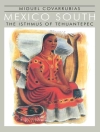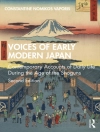Concern about the size of the world’s population did not begin with the ‘population bomb’ in 1968. It arose in the aftermath of World War I and was understood as an issue with far-reaching ecological, agricultural, economic, and geopolitical consequences. The world population problem concerned the fertility of soil as much as the fertility of women, always involving both ‘earth’ and ‘life.’
Global Population traces the idea of a world population problem as it evolved from the 1920s through the 1960s. The growth and distribution of the human population over the planet’s surface came deeply to shape the characterization of ‘civilizations’ with different standards of living. It forged the very ideas of development, demographically defined three worlds, and, for some, an aspirational ‘one world.’
Drawing on international conference transcripts and personal and organizational archives, this book reconstructs the twentieth-century population problem in terms of migration, colonial expansion, globalization, and world food plans. Population was a problem in which international relations and intimate relations were one. Global Population ultimately shows how a geopolitical problem about sovereignty over land morphed into a biopolitical solution, entailing sovereignty over one’s person.
Jadual kandungan
Acknowledgments
Introduction: Life and Earth
Part I. The Long Nineteenth Century
1. Confined in Room: A Spatial History of Malthusianism
Part II. The Politics of Earth, 1920s and 1930s
2. War and Peace: Population, Territory, and Living Space
3. Density: Universes with Definite Limits
4. Migration: World Population and the Global Color Line
5. Waste Lands: Sovereignty and the Anticolonial History of World Population
Part III. The Politics of Life, 1920s and 1930s
6. Life on Earth: Ecology and the Cosmopolitics of Population
7. Soil and Food: Agriculture and the Fertility of the Earth
8. Sex: The Geopolitics of Birth Control
9. The Species: Human Difference and Global Eugenics
Part IV. Between One World and Three Worlds, 1940s to 1968
10. Food and Freedom: A New World of Plenty?
11. Life and Death: The Biopolitical Solution to a Geopolitical Problem
12. Universal Rights? Population Control and the Powers of Reproductive Freedom
Conclusion: The Population Bomb in the Space Age
Notes
Archival Collections
Index
Mengenai Pengarang
Alison Bashford is a historian whose many books connect imperial and world history with medical and environmental histories. She is the Vere Harmsworth Professor of Imperial and Naval History, University of Cambridge, and has taught at Harvard University, the Australian National University, and, for many years, at the University of Sydney. In 2011, she won the Cantemir Prize with Philippa Levine for
The Oxford Handbook of the History of Eugenics.












